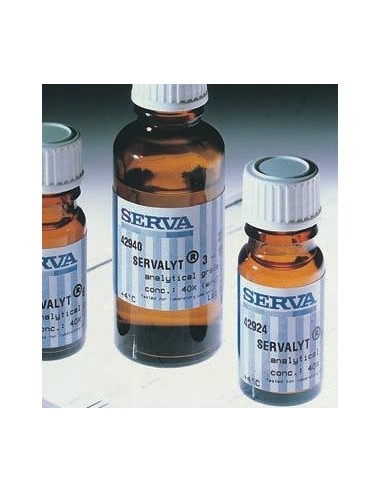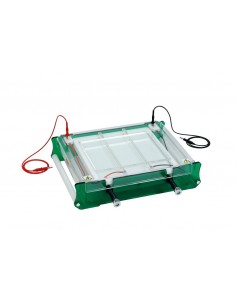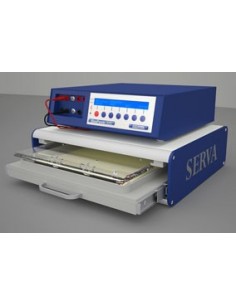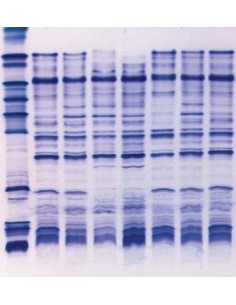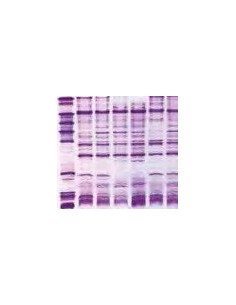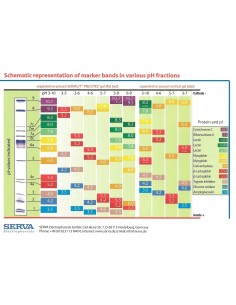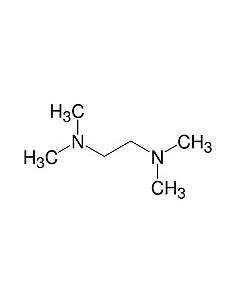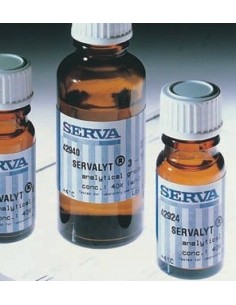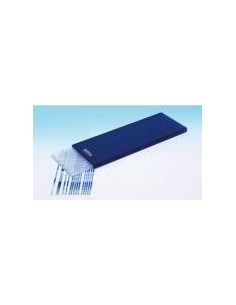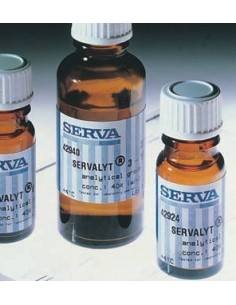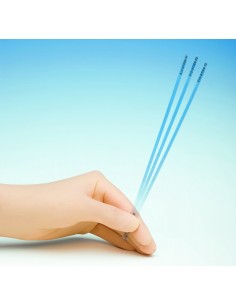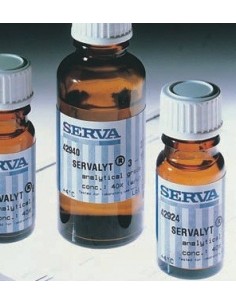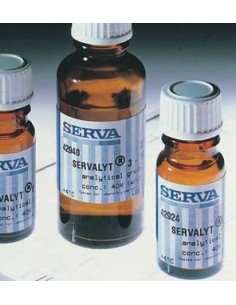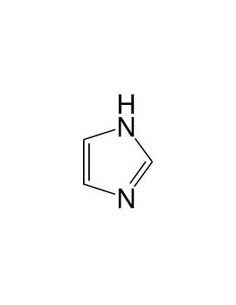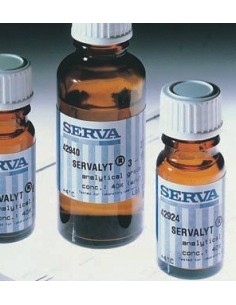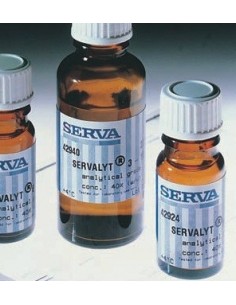Ampholytes 7-9 (Servalyt 7-9)
Carrier Ampholyte pH 7-9
Applications: Isoelectric focusing, capillary electrophoresis, free-flow electrophoresis
SERVALYT™ pH 7-9 carrier ampholytes are useful in identifying neutral and basic isotypes in purified protein samples such as monoclonal antibodies or other biosimilar protein products.
They are supplied as 40 % aqueous concentrate and sterile filtered (0.2 μm). If stored at 4 °C and unopened shelf is up to 3 years. The common working concentration is in the range of 3 % to 5 %. SERVALYT™ ampholytes are recommended for rehydration of dry IPG gel strips in 2DGE, DIGE, e.g. SERVA IPG BlueStrips, and medium-free IEF systems, e.g. free flow and capillary electrophoresis.
Benefits:
- Available Two Sizes: 10 ml & 25ml
- High Resolution
- Widest Range Available
- Fast Staining and Clear Background
- Ready to Use or Blending
- 3 year shelf life
Comparison of different brands of carrier ampholytes
Using an ampholyte pH 7-9 in isoelectric focusing (IEF) offers several applications and benefits, including:
Specific targeting of proteins with pI values in the pH 7-9 range: The pH range of 7-9 allows for the focused separation of proteins with isoelectric points (pI) within this specific range. It is particularly suitable for proteins with slightly basic to moderately basic characteristics. By providing a narrow pH gradient, it facilitates the precise migration and focusing of proteins at their respective pI positions, leading to well-resolved bands and improved accuracy in protein analysis.
High-resolution separation: The use of an ampholyte pH 7-9 in IEF enables high-resolution separation of proteins with specific pI values. The narrow pH range enhances the ability to discriminate proteins with similar pI values, resulting in sharper and well-defined protein bands. This enhances the sensitivity and specificity of protein detection, identification, and characterization.
Analysis of specific protein subsets: By focusing on the pH range of 7-9, IEF using an ampholyte pH 7-9 allows for the targeted analysis of specific protein subsets. Certain classes of proteins may have pI values predominantly in this range, such as certain enzymes or regulatory proteins. This allows researchers to isolate and study these specific proteins within a complex sample mixture.
Protein purification and enrichment: IEF using an ampholyte pH 7-9 can be utilized for protein purification and enrichment. By focusing on the pH range of 7-9, proteins of interest can be separated from other contaminants or unwanted proteins. This facilitates the isolation of specific proteins for downstream applications, such as further analysis or functional studies.
Proteomic profiling: The use of an ampholyte pH 7-9 in IEF is valuable in proteomic profiling studies. By focusing on proteins with pI values in the 7-9 range, researchers can gain insights into specific cellular processes, protein-protein interactions, or disease-related alterations. This targeted profiling allows for a more detailed analysis of proteins within this specific pH range.
Integration with other techniques: IEF using an ampholyte pH 7-9 can be combined with other techniques for comprehensive protein analysis. Following the separation in the first dimension, the resolved proteins can be further analyzed using techniques such as gel electrophoresis, Western blotting, or mass spectrometry, enabling a multi-dimensional approach for protein characterization.
Biomarker discovery and clinical applications: IEF with an ampholyte pH 7-9 can be utilized in biomarker discovery studies. By comparing protein expression profiles between different samples, potential biomarkers associated with specific diseases or conditions can be identified. The focused separation within the pH range of 7-9 allows for the detection of disease-specific protein alterations, aiding in diagnostic and prognostic applications.
In summary, using an ampholyte pH 7-9 in IEF offers targeted separation, high-resolution analysis, specific protein subset analysis, protein purification and enrichment capabilities, proteomic profiling potential, integration with other techniques, and finds application in biomarker discovery and clinical research.
No reviews

